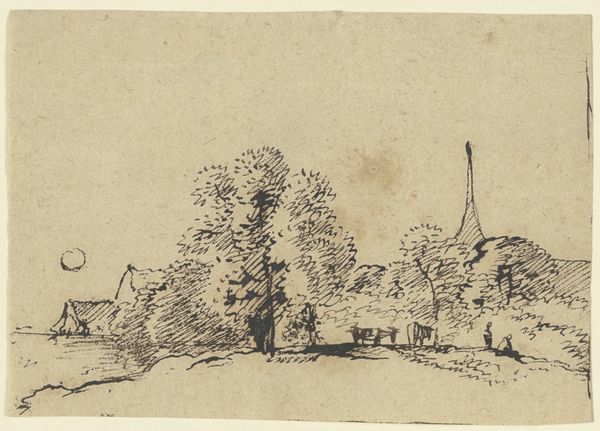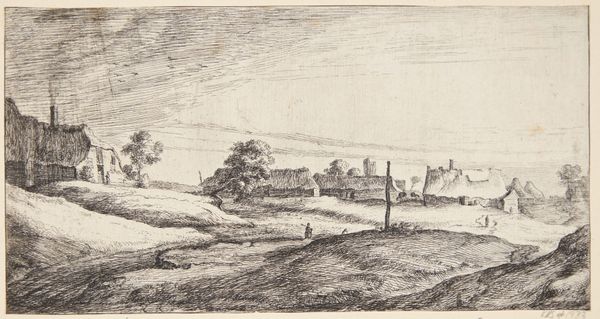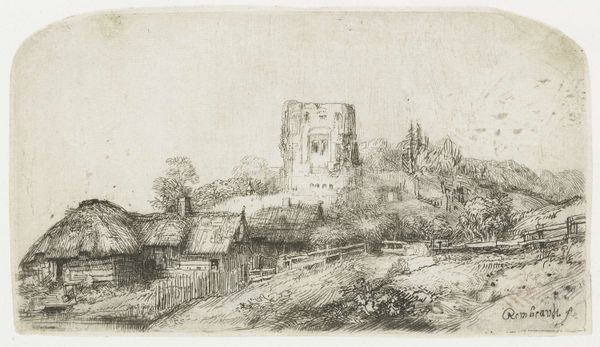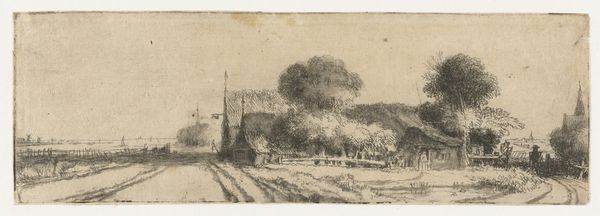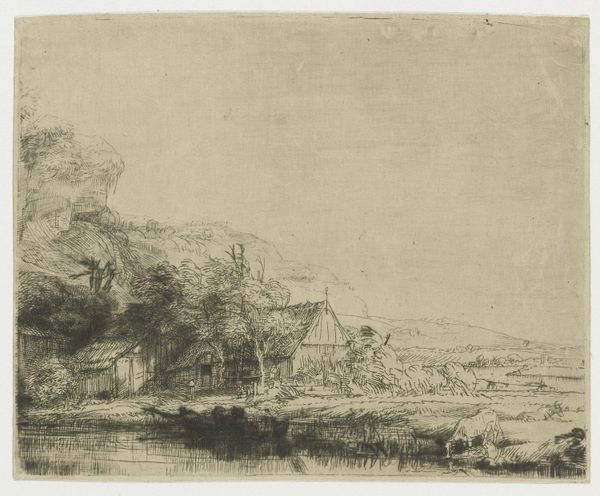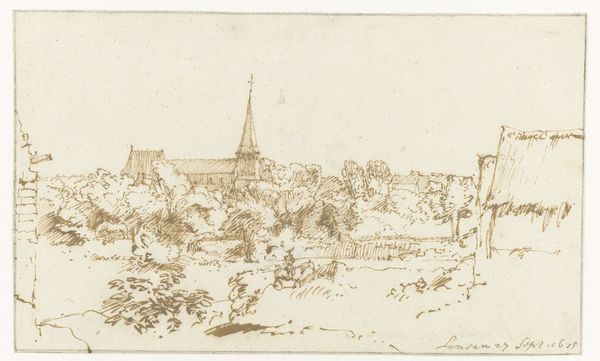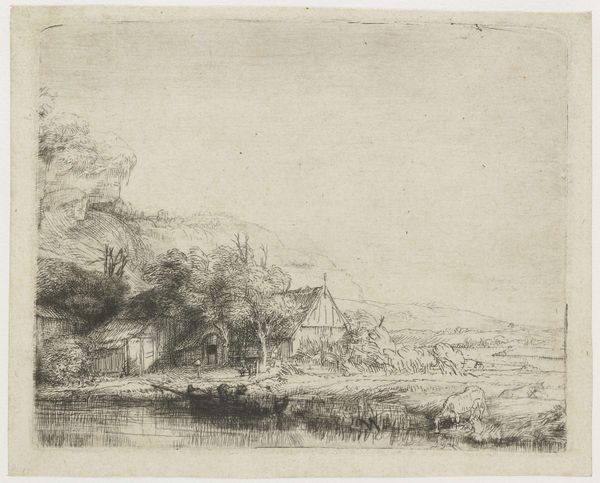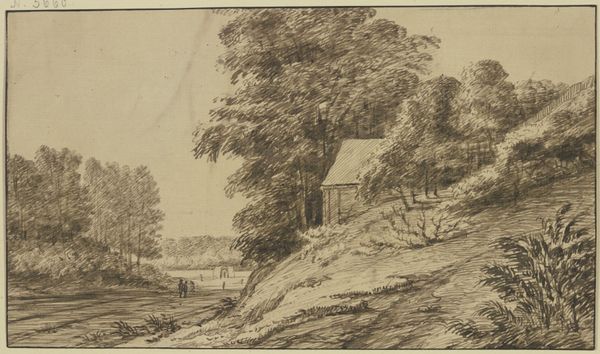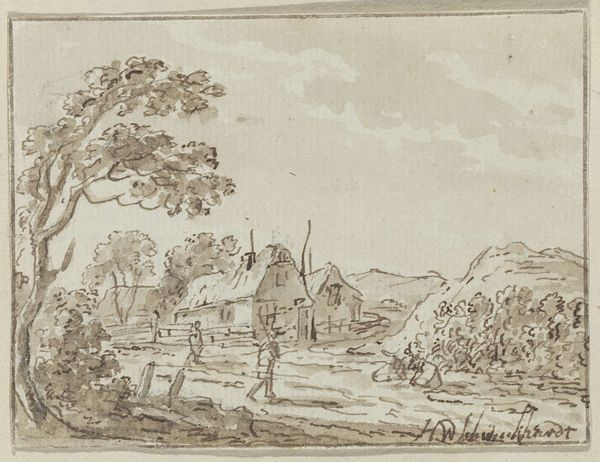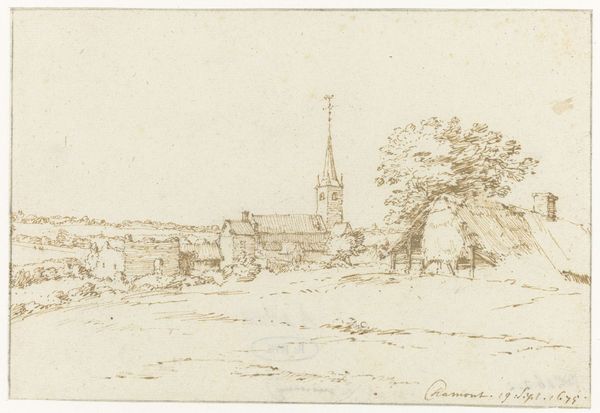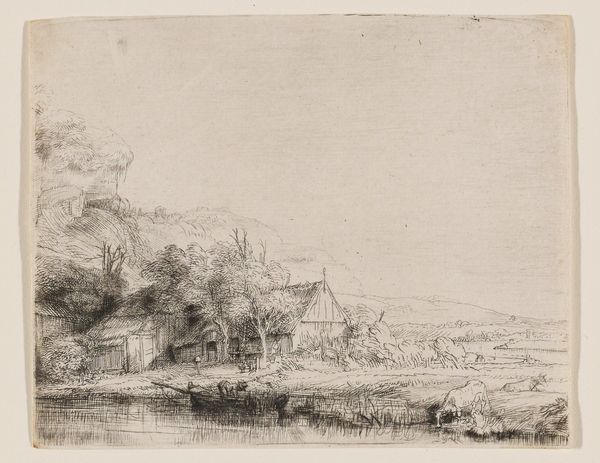
drawing, etching, ink
#
drawing
#
dutch-golden-age
#
pen sketch
#
etching
#
pencil sketch
#
landscape
#
ink
#
realism
Dimensions: height 58 mm, width 176 mm
Copyright: Rijks Museum: Open Domain
Curator: Philips Koninck, a Dutch Golden Age artist, likely created this work, “Two Farmhouses with Pointed Gables,” sometime between 1629 and 1688. It’s rendered in ink, using drawing and etching techniques. Editor: There’s a starkness to it, isn't there? Almost feels desolate, even though there's a suggestion of life in those clustered farm buildings. Curator: Note how Koninck masterfully uses a restrained palette. The varying line weights of the etching create depth and texture, illustrating fields ready for planting and implying daily farm labour. Editor: The peaked roofs remind me of reaching hands, maybe gesturing to the heavens or simply reflecting the Dutch ambition to cultivate the land. There's also a church spire rising subtly in the background. Curator: Interesting, considering that this church subtly indicates the established social structure—where farming provided a material foundation, religion provided a societal superstructure. This seemingly humble depiction becomes significant within a cultural ecosystem. Editor: Exactly, it’s never *just* about the scene. Those farmhouses become emblematic. Simple abodes, they carry connotations of resilience and a particular cultural connection to the land. One also cannot fail to spot the stark church towering in the skyline to establish scale. Curator: Indeed, the etcher's hand demonstrates a keen observation of vernacular architecture alongside a delicate appreciation of labor-intensive printmaking practices. This was produced at a time when such images of agricultural labor entered the art market as collectible things in their own right. Editor: Looking at Koninck’s piece through this lens, I see that he's captured both the humility and tenacity ingrained in this cultural memory, the very foundations that shaped that landscape. Curator: Absolutely, and that perspective allows for a more robust interpretation, acknowledging the material context of production and broader societal values. Editor: Thank you. Examining these layers only enriches our understanding. Curator: Yes, understanding the making and the making allows us a portal into the symbolic power the landscape possesses.
Comments
No comments
Be the first to comment and join the conversation on the ultimate creative platform.
